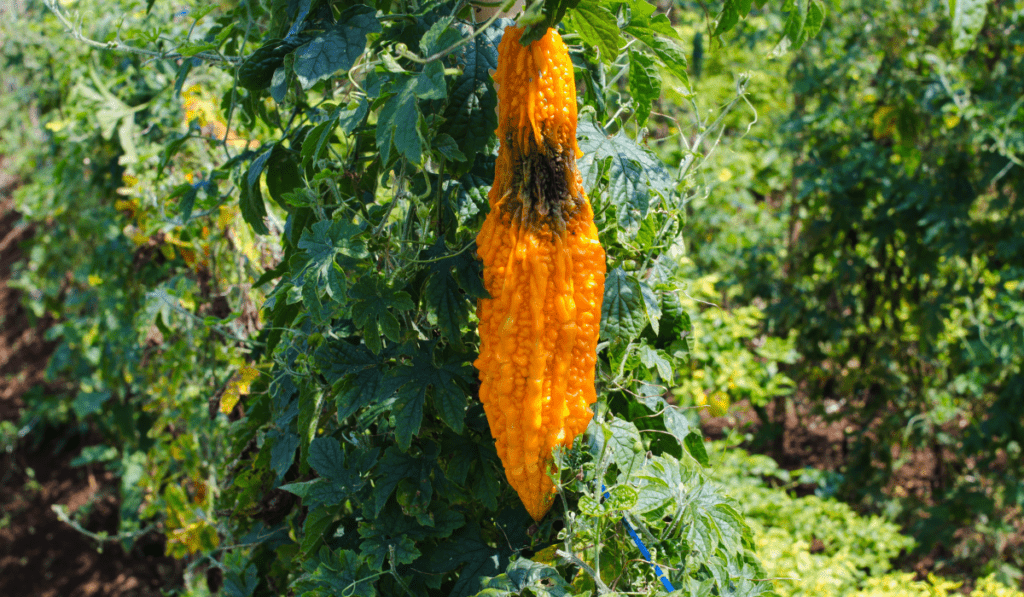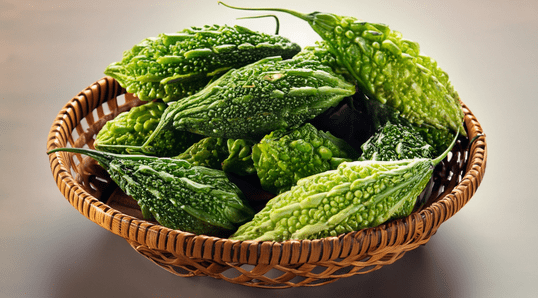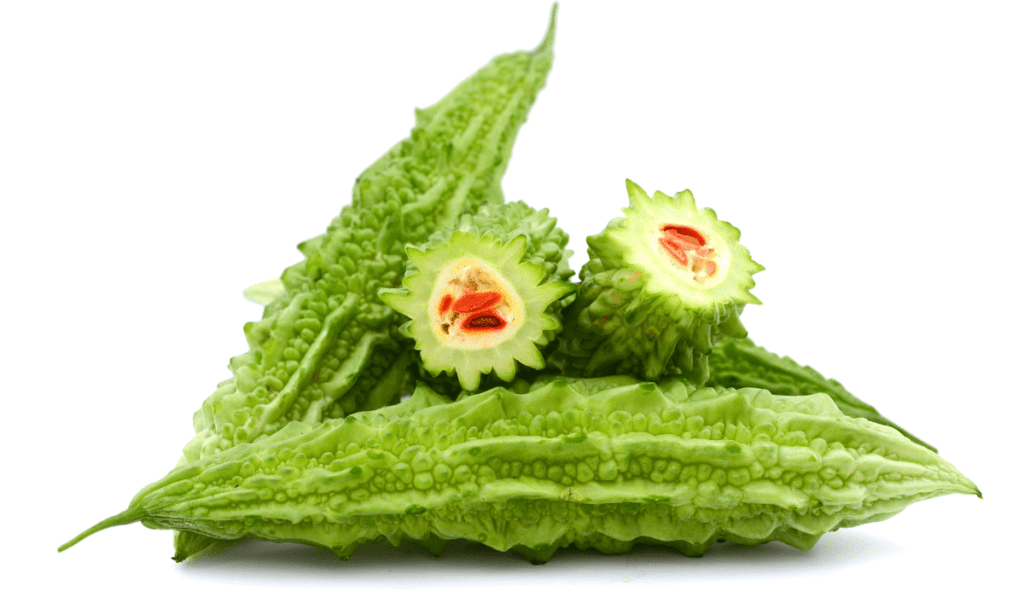Cultivating bitter gourd is a rewarding venture, but the journey is not without its challenges. In this in-depth guide, we’ll delve into the often underestimated world of bitter gourd pests. Discovering and understanding these pests is key to safeguarding your harvest and ensuring a thriving bitter gourd garden.
The Impact of Pests on Bitter Gourd Cultivation
Bitter gourd cultivation extends beyond the joy of growing—it’s a crucial aspect of agriculture with economic and health implications. Pests can wreak havoc on your harvest, leading to reduced yields and poor-quality produce. Recognizing the significance of pest control is the first step toward creating a robust defense strategy.
In-Depth Look at the 7 Major Pests
1. Aphids
Aphids are tiny, sap-sucking insects that can devastate bitter gourd plants. Recognizing these pests early on is essential for effective management.
Characteristics and Behavior
Aphids are small, pear-shaped insects often found in clusters on the undersides of leaves. Their feeding can cause wilting and distortion of leaves.
Damage to Bitter Gourd
Aphids damage bitter gourd by sucking sap, leading to stunted growth and the transmission of viruses.
Detection and Prevention
Regularly inspect the undersides of leaves for clusters of aphids. Introduce natural predators like ladybugs and use insecticidal soaps for control.
2. Whiteflies
Whiteflies are another formidable adversary for bitter gourd growers. Understanding their behavior is crucial for effective pest management.
Characteristics
Whiteflies are tiny, winged insects that leave a white, powdery residue when disturbed. They feed on plant sap.
Impact on Bitter Gourd
Whiteflies cause yellowing of leaves, reduce photosynthesis, and transmit plant viruses.
Identifying Whitefly Infestations
Regularly check the underside of leaves for whitefly colonies. Implement companion planting to deter whiteflies.
3. Spider Mites
Spider mites are microscopic pests that can have a macro impact on your bitter gourd harvest. Understanding their behavior is crucial for prevention.
Characteristics and Behavior
Spider mites are tiny arachnids that feed on plant sap, causing stippling and discoloration of leaves.
Signs of Infestation
Look for fine webbing on leaves and tiny, discolored specks. This is indicative of spider mite presence.
Detection and Prevention
Use a magnifying glass to inspect leaves for mites. Increase humidity and regularly spray plants with water to deter these pests.
4. Thrips
Thrips are minuscule insects that can wreak havoc on bitter gourd plants. Understanding their lifecycle is vital for effective control.
Characteristics
Thrips are slender insects with fringed wings, and they feed on plant sap.
Impact on Bitter Gourd
Thrips cause silvering of leaves, distorted growth, and can transmit plant diseases.
Early Detection
Inspect leaves for silvery streaks and distorted growth. Introduce natural predators like predatory mites.
5. Fruit Flies
Fruit flies pose a unique challenge for bitter gourd growers. Understanding their attraction and behavior is key to safeguarding your crop.
Characteristics and Behavior
Fruit flies are attracted to the aroma of ripening fruits, and they lay their eggs in the fruit.
Damage Caused
Fruit flies result in bitter gourd fruits with larvae inside, rendering them inedible.
Prevention Strategies
Implement sanitation measures to remove overripe fruits. Use traps and covers to protect developing fruits.
6. Cutworms
Cutworms are nocturnal caterpillars that can cut down your bitter gourd plants overnight. Knowing their habits is crucial for effective prevention.
Characteristics and Behavior
Cutworms are moth larvae that hide in the soil during the day and emerge at night to feed on plant stems.
Signs of Infestation
Bitten stems near the soil surface and wilting plants are indicative of cutworm activity.
Natural Predators and Prevention
Encourage natural predators like ground beetles. Use collars around seedlings to prevent cutworm access.
7. Bitter Gourd Beetle
The bitter gourd beetle is a specific threat to bitter gourd plants. Understanding its lifecycle is crucial for control.
Characteristics
The bitter gourd beetle is easily recognizable by its distinct appearance, often black or brown with yellow markings.
Damage Caused
Bitter gourd beetles feed on leaves, causing holes and damage to foliage.
Control Methods
Introduce beneficial insects like parasitic wasps. Use neem oil or insecticidal soap for control.
Prevention and Control Strategies
Successfully navigating the battle against bitter gourd pests demands a combination of proactive measures and strategic interventions. Here’s a comprehensive guide to adopting effective prevention and control strategies.
Integrated Pest Management (IPM)
Adopting a Holistic Approach: Integrated Pest Management (IPM) is a holistic strategy that integrates various control methods to minimize the impact of pests while preserving environmental balance. Here’s how you can implement IPM for your bitter gourd garden:
- Cultural Controls:
- Crop Rotation: Rotate bitter gourd crops with unrelated plants to disrupt pest life cycles.
- Companion Planting: Intercrop with plants that naturally repel pests or attract beneficial insects.
- Biological Controls:
- Natural Predators: Introduce beneficial insects such as ladybugs, predatory mites, and parasitic wasps.
- Microbial Insecticides: Use biological insecticides containing beneficial microorganisms.
- Chemical Controls:
- Selective Pesticides: Choose pesticides that target specific pests while minimizing harm to beneficial insects.
- Responsible Application: Follow recommended application rates and timings to reduce environmental impact.
Regular Inspection and Monitoring
Vigilance for Early Detection: Frequent inspections are the cornerstone of effective pest management. By regularly monitoring your bitter gourd plants, you can detect signs of pest activity at an early stage, allowing for prompt intervention. Here’s a systematic approach to inspection:
- Leaf Inspection:
- Examine both sides of leaves for pests, eggs, or characteristic damage.
- Look for discoloration, wilting, or abnormal growth patterns.
- Soil Inspection:
- Check the soil surface for cutworms or other soil-dwelling pests.
- Inspect the base of plants for signs of root knot nematodes.
- Trapping and Monitoring Devices:
- Utilize pheromone traps to monitor pest populations.
- Set up yellow sticky traps to capture flying insects like whiteflies.
Swift Action: Upon detection of pests or early signs of infestation, take immediate action to prevent further damage. Consider the following measures:
- Manual Removal:
- Handpick larger pests like beetles and caterpillars.
- Prune and dispose of infested plant parts.
- Natural Predators:
- Encourage the presence of natural predators.
- Avoid using broad-spectrum pesticides that harm beneficial insects.
- Organic Remedies:
- Apply organic solutions like neem oil or insecticidal soap.
- Use homemade remedies like garlic spray or chili pepper spray.
- Chemical Intervention:
- When necessary, apply chemical pesticides with targeted action.
- Follow recommended dosage and safety guidelines.
Record Keeping: Maintain a garden journal to track inspection findings, interventions, and their effectiveness. This record can guide future pest management strategies and help identify recurring issues.
Conclusion
Cultivating a flourishing bitter gourd garden is a gratifying pursuit, but it comes with its set of challenges, particularly in the realm of pest management. As guardians of our bitter gourd plants, understanding the intricacies of these pests becomes paramount for safeguarding our harvests and nurturing a thriving garden.
The Significance of Pest Control
Bitter gourd cultivation transcends mere gardening; it holds economic and health implications. Pests can significantly impact your harvest, leading to diminished yields and compromised produce quality. Recognizing the importance of pest control lays the foundation for crafting a robust defense strategy.
In-Depth Exploration of Major Pests
Our journey into the world of bitter gourd pests involves a detailed examination of seven major adversaries:
- Aphids: Tiny, sap-sucking insects that demand early recognition for effective management.
- Whiteflies: Winged insects causing yellowing of leaves and virus transmission.
- Spider Mites: Microscopic arachnids causing stippling and discoloration.
- Thrips: Slender insects inducing silvering of leaves and distorted growth.
- Fruit Flies: Attracted to ripening fruits, they lay eggs inside, rendering them inedible.
- Cutworms: Nocturnal caterpillars that can decimate young plants overnight.
- Bitter Gourd Beetle: A specific threat causing damage to foliage.
Prevention and Control Strategies
Effectively navigating the battle against bitter gourd pests requires a combination of proactive measures and strategic interventions. Embracing Integrated Pest Management (IPM) as a holistic approach, incorporating cultural, biological, and chemical controls, ensures a balanced and sustainable defense against pests. Regular inspection and monitoring, swift action upon detection, and responsible chemical interventions are pivotal aspects of a comprehensive strategy.



